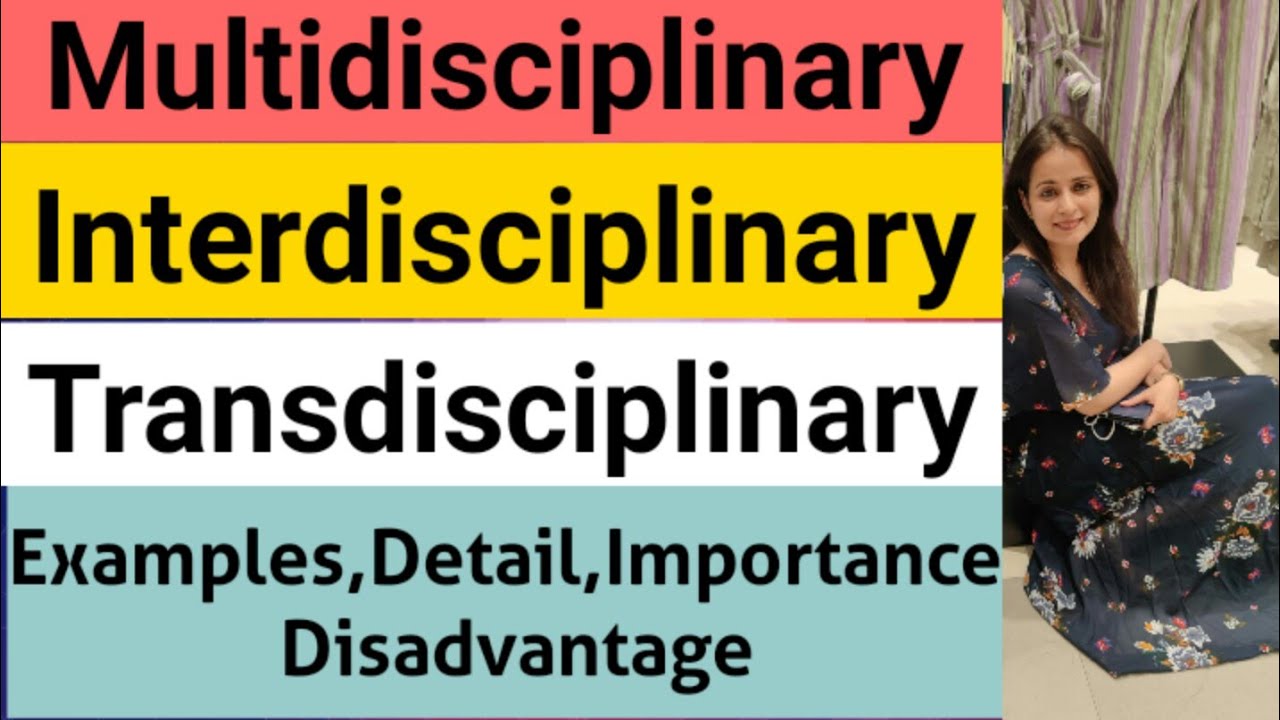Why Choose Interdisciplinarity And Transdisciplinarity? A Practical Overview

Table of Contents
We’ll define "interdisciplinarity" as the integration of knowledge, methods, and perspectives from two or more disciplines to address a shared problem. "Transdisciplinarity," on the other hand, goes further, encompassing collaboration not only between disciplines but also with stakeholders outside academia—policymakers, community members, and practitioners—to co-create solutions. Both approaches leverage integrated knowledge for effective complex problem-solving.
Enhanced Problem-Solving Capabilities through Interdisciplinarity and Transdisciplinarity
Combining different disciplinary perspectives dramatically enhances our problem-solving capabilities. By bringing together diverse viewpoints, we achieve a deeper understanding of the problem's complexities and identify potential solutions that might be missed through a single-discipline lens. This integrated solutions approach allows for a more holistic approach to innovative problem-solving.
- Tackling climate change: requires expertise from environmental science, economics, sociology, and policy studies to develop effective mitigation and adaptation strategies.
- Improved critical thinking: Diverse viewpoints challenge assumptions and biases, leading to more robust and well-rounded solutions.
- Identifying blind spots and biases: Single disciplines can inadvertently overlook crucial factors, while a multidisciplinary team is more likely to identify these blind spots.
- Developing more holistic and sustainable solutions: Considering the interconnectedness of various aspects of a problem leads to solutions that are more likely to be sustainable in the long term.
Fostering Innovation and Creativity in Interdisciplinary and Transdisciplinary Research
The interaction of diverse ideas and methods is a powerful catalyst for innovation. The cross-pollination of ideas and methodologies inherent in interdisciplinary collaboration and transdisciplinary innovation sparks creativity and leads to breakthroughs that might not be possible within the confines of a single discipline.
- Cross-pollination of ideas and methodologies: Researchers from different backgrounds bring unique perspectives and approaches, leading to the development of novel research questions and methods.
- Development of novel research questions and approaches: The interaction between disciplines can lead to entirely new ways of thinking about problems and finding solutions. This fosters research innovation.
- Enhanced ability to translate research findings into practical applications: Involving stakeholders outside academia ensures that research is relevant and applicable to real-world situations.
- Successful projects: Examples include the development of new medical treatments through collaborations between biologists, chemists, and physicians, or advancements in renewable energy technologies through the combined efforts of engineers, material scientists, and economists.
Addressing Complex Challenges through Interdisciplinary and Transdisciplinary Methods
Interdisciplinary and transdisciplinary methods are particularly valuable for addressing complex, real-world problems where single-discipline approaches often fall short. These approaches recognize the interconnected nature of global challenges, offering a pathway to sustainable solutions.
- Examples: Public health crises (requiring expertise in epidemiology, medicine, public policy, and behavioral science), sustainable development (combining environmental science, economics, social sciences, and engineering), and technological advancements (integrating computer science, engineering, and design).
- Limitations of single-discipline approaches: Addressing complex issues requires a broad perspective that considers the interplay of various factors, something that is often missing in single-discipline research.
- Overcoming limitations: Interdisciplinary and transdisciplinary efforts provide a framework for integrating diverse perspectives and addressing these limitations.
- Collaboration and communication: Effective collaborative research hinges on strong communication and a shared understanding of goals and methodologies.
Practical Considerations for Implementing Interdisciplinary and Transdisciplinary Projects
While the benefits are significant, implementing interdisciplinary and transdisciplinary projects presents its own challenges. Successful implementation requires careful planning and effective management of the inherent complexities.
- Overcoming communication barriers: Researchers from different fields may use different terminology and have different approaches to research. Clear communication and a shared understanding are crucial.
- Managing diverse research methodologies and timelines: Coordinating research activities across disciplines requires careful planning and management.
- Building effective collaborations among researchers from different fields: Building trust and fostering a collaborative environment are essential for successful teamwork.
- Securing funding for interdisciplinary and transdisciplinary projects: Funding agencies may have specific requirements or preferences for interdisciplinary research, and securing funding often requires a well-defined proposal that clearly outlines the value and feasibility of the project.
Conclusion: Choosing the Path of Interdisciplinarity and Transdisciplinarity
Interdisciplinary and transdisciplinary approaches offer significant advantages in tackling complex global challenges. By integrating knowledge and perspectives from diverse fields, these approaches foster innovation, enhance problem-solving capabilities, and lead to more holistic and sustainable solutions. We encourage you to explore the possibilities of embracing interdisciplinarity and adopting a transdisciplinary approach in your own field. Consider building interdisciplinary teams and promoting transdisciplinary research. To learn more, explore resources from organizations like the National Science Foundation (NSF) and the European Commission, which actively fund and support interdisciplinary research. By working together across disciplines, we can build a brighter future.

Featured Posts
-
 Espionage Case Understanding The Arrest Of Haryana You Tuber Jyoti Malhotra
May 19, 2025
Espionage Case Understanding The Arrest Of Haryana You Tuber Jyoti Malhotra
May 19, 2025 -
 Understanding Sovereign Bond Market Trends With Swissquote Bank
May 19, 2025
Understanding Sovereign Bond Market Trends With Swissquote Bank
May 19, 2025 -
 Eurovision 2025 Austrias Jj Wins With Powerful Ballad Wasted Love
May 19, 2025
Eurovision 2025 Austrias Jj Wins With Powerful Ballad Wasted Love
May 19, 2025 -
 Jon Almaas Nye Liv Som Bonde Inspirerende Historie
May 19, 2025
Jon Almaas Nye Liv Som Bonde Inspirerende Historie
May 19, 2025 -
 Ryujinx Emulator Project Closure Official Statement Following Nintendo Contact
May 19, 2025
Ryujinx Emulator Project Closure Official Statement Following Nintendo Contact
May 19, 2025
